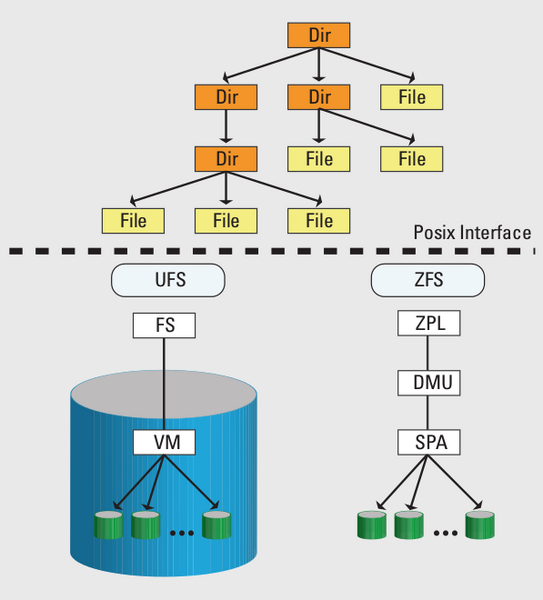The ZFS filesystem and volume manager simplifies data storage management and offers advanced features that allow it to perform in mission-critical or high-performance environments.
If you manage storage servers, chances are you are already aware of ZFS and some of the features and functions it boasts. In short, ZFS is a combined all-purpose filesystem and volume manager that simplifies data storage management while offering some advanced features, including drive pooling with software RAID support, file snapshots, in-line data compression, data deduplication, built-in data integrity, advanced caching (to DRAM and SSD), and more.

Zfs Volume Manager Download
Select base component for installation. Boot your system with the FreeBSD setup CD/media in it. ZFS is a combined file system and logical volume manager originally designed and implemented by a team at Sun Microsystems led by Jeff Bonwick and Matthew Ahrens. Features of ZFS include protection against data corruption, high storage capacity (256 ZiB), snapshots and copy-on-write clones and continuous integrity checking to name but a few.
ZFS is licensed under the Common Development and Distribution License (CDDL), a weak copyleft license based on the Mozilla Public License (MPL). Although open source, ZFS and anything else under the CDDL was, and supposedly still is, incompatible with the GNU General Public License (GPL). This hasn’t stopped ZFS enthusiasts from porting it over to the Linux kernel, where it remains a side project under the dominion of the ZFS on Linux (ZoL) project.
The ZoL project not only helped introduce the advanced filesystem to Linux users, it garnered its fair share of users, some developers, and an entire community to support it. That aside, with a significant user base and the filesystem’s use for a wide variety of applications (HPC included), it often becomes necessary to know how to tune the filesystem and understand which knobs to turn.

- In Oracle Solaris 10, you can create redundant volumes for UFS file systems by using Solaris Volume Manager. Solaris Volume Manager is a traditional volume management product with a layer of volume management and a layer of file system management. ZFS, available in Oracle Solaris 10 and Oracle Solaris 11 releases, eliminates volume management altogether. Instead of creating virtualized.
- ZFS volume is three times slower on sequential write, and 20% slower on sequential read then the Global Zone; the VDI disk performance can actually be higher (sic) than in Global Zone. The first takeaway may mean that unneeded fsync occurs on some layer and the second takeaway may mean that something fishy is happening with synchronizing.
You should understand that when you decide to apply the methods exercised in this article, you must do so with caution or after dry runs before rolling it out into production.
Creating the Test Environment
To begin, you need a server (or virtual machine) with one or more spare drives. I advise more than one because when it comes to performance, spreading I/O load across more disk drives instead of bottlenecking a single drive helps significantly. Therefore, I use four local drives – sdc, sdd, sde, and sdf – in this article:
Make sure to load the ZFS modules,
and verify that they are loaded:
With the four drives identified above, I create a ZFS RAIDZ pool, which is equivalent to RAID5,
and verify the status of the pool (Listing 1) and that it has been mounted (Listing 2).
Listing 1: Pool Status
Listing 2: Pool Mounted
Some Basic Tuning
A few general procedures can tune a ZFS filesystem for performance, such as disabling file access time updates in the file metadata. Historically, filesystems have always tracked when a user or application accesses a file and logs the most recent time of access, even if that file was only read and not modified. This activity can affect metadata performance when updating this field. To avoid this unnecessary I/O, simply turn off the atime parameters:
To verify that it has been turned off, use the zfs get atime command:
Zfs Volume Manager Windows 10

Another parameter that can affect performance is compression, and although some algorithms (e.g., LZ4) are known to perform extremely well, it still sucks up a bit of CPU time compared with its counterparts. Therefore, disable filesystem compression,
and verify that compression has been turned off:
To view all available parameters, use zfs get all (Listing 3).
Listing 3: View Parameters
1234Next »

